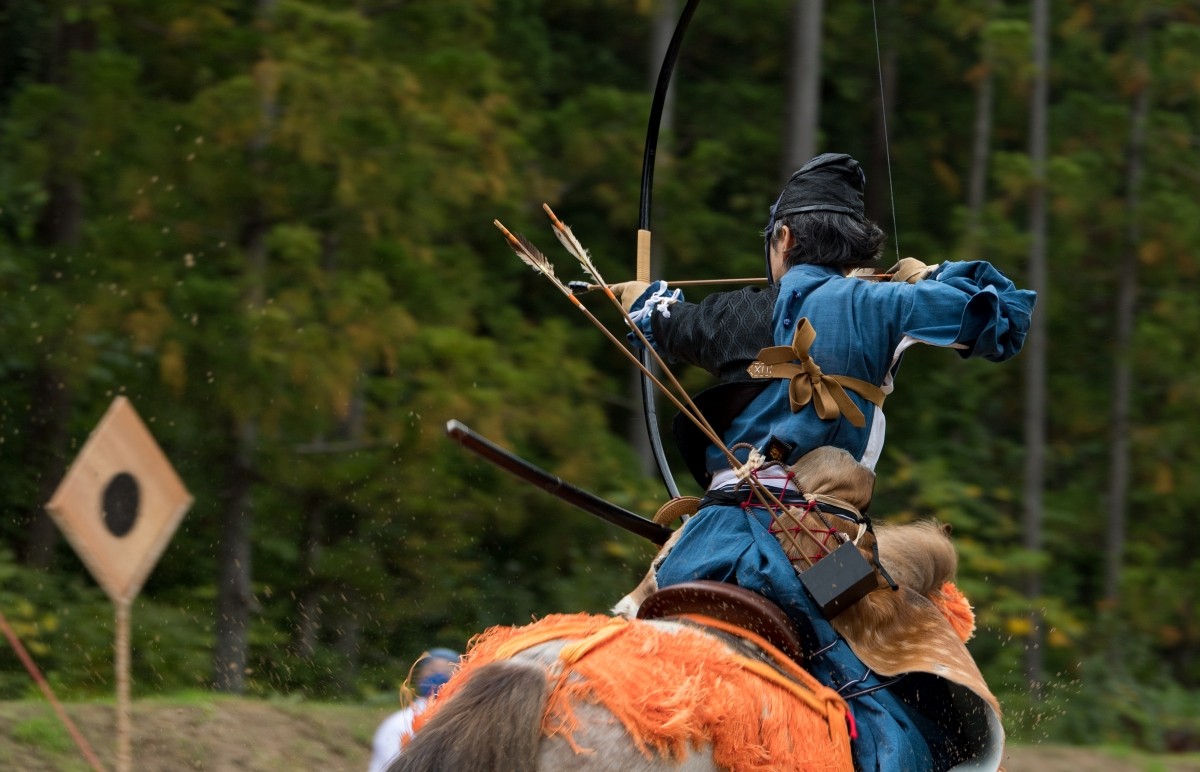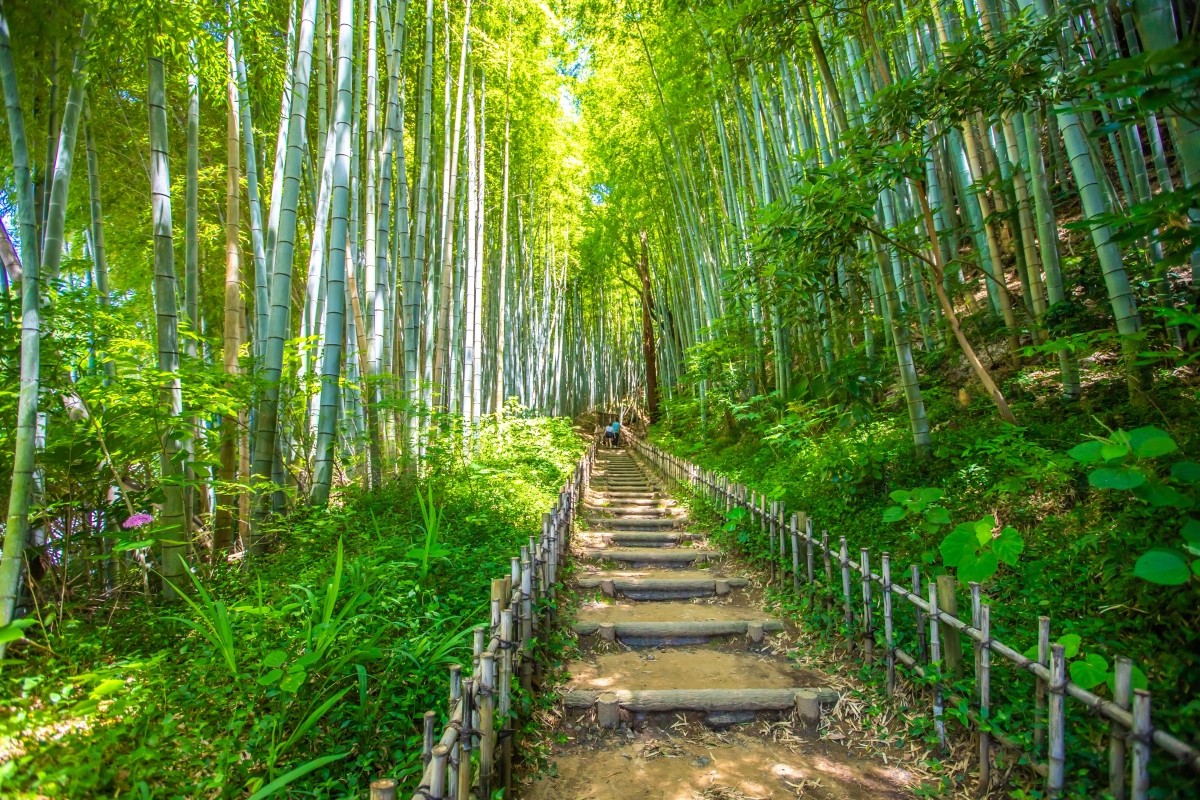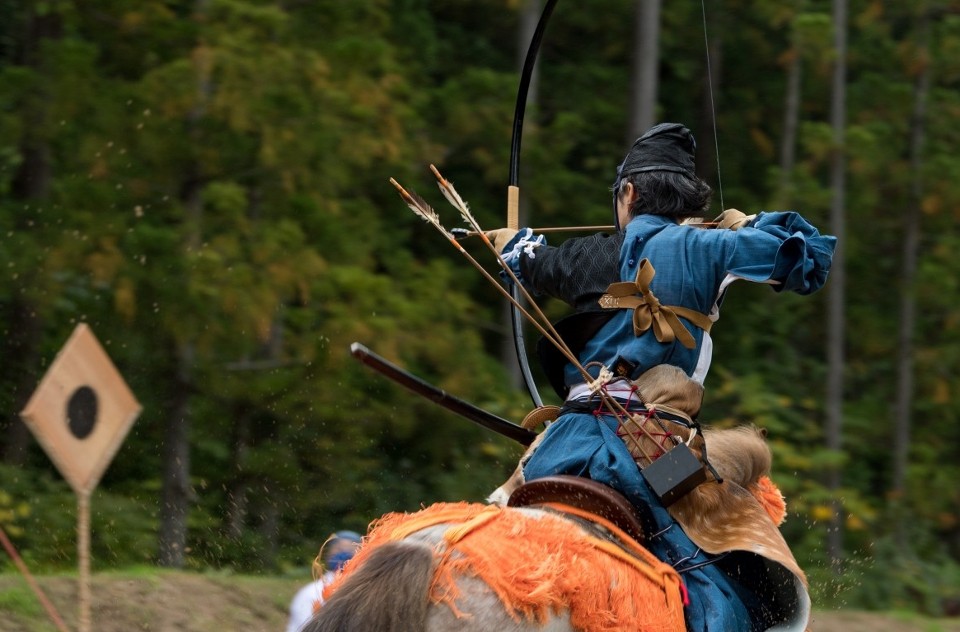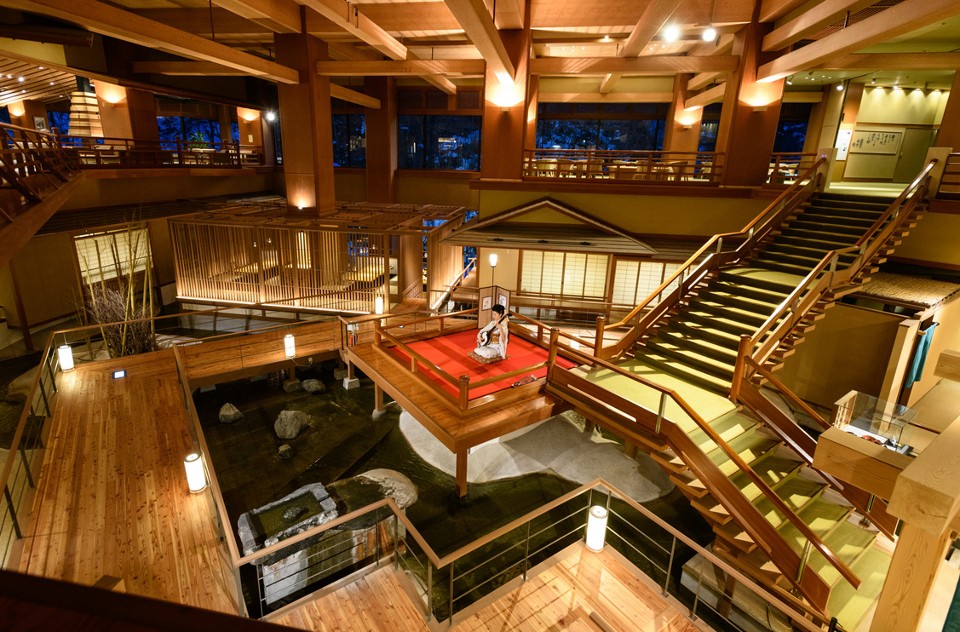
The TV anime "The Elusive Samurai," based on a manga serialized in "Weekly Shonen Jump," has been gaining attention since it began airing in July 2024. You may have already heard about it, as it quickly became a hot topic on social media right after its release. The story focuses on a real historical figure, Hojo Tokiyuki (?-1353 *1). For those familiar with Japanese history, the name "Hojo" might immediately ring a bell, leading to the assumption that Tokiyuki must have been a prominent figure during the Kamakura or Sengoku periods. However, knowing exactly what he accomplished in his life is a bit trickier. Few could instantly point out that he was the one who led the Nakasendai Rebellion.
In this article, we’ll dive into the life of Hojo Tokiyuki, exploring the surviving historical records that document his journey through history.
Please note: This article contains potential spoilers for both the anime and the original manga. Read at your own risk!
*Note: A portion of the proceeds from products mentioned or reserved in this article may go to FUN! JAPAN.
The Life of Hojo Tokiyuki: A Man Who Fought for Kamakura and Led the "Nakasendai Rebellion"

Let’s dive into the life of Hojo Tokiyuki, drawing mainly from Yumi Suzuki’s The Nakasendai Rebellion: Hojo Tokiyuki's Dream of Restoring the Kamakura Shogunate (Chuko Shinsho, 2021). First, a quick history lesson: the Kamakura Shogunate was a military government founded in the late 12th century by Minamoto no Yoritomo. It was run by the samurai who served under the shogun, known as gokenin. In 1192, Yoritomo was appointed "Sei-i Taishogun" (Great General Who Subdues the Barbarians). After his death, Hojo Yoshitoki, the brother of Yoritomo’s wife, Masako Hojo, became the shikken—a position that combined control of the government’s finances and military. From this point onward, the role of shikken became exclusive to the Hojo clan.
Tokiyuki’s Early Life: His Birth and the Fall of the Shogunate
Hojo Tokiyuki was born into this powerful family as the son of Hojo Takatoki, the shikken of the Kamakura Shogunate. While the exact year of his birth remains unclear, a letter dated January 11, 1330, mentions "Young Lord," referring to a child born to Hojo Takatoki, which is believed to be Tokiyuki (as noted by Suzuki in her book). In the anime The Elusive Samurai, Tokiyuki’s older brother Kuniyuki (born in 1325) is said to be the son of Takatoki’s concubine, while Tokiyuki was born to Takatoki’s official wife. However, historically, no children have been confirmed between Takatoki and his official wife. It’s also unknown whether Kuniyuki and Tokiyuki shared the same mother.
During Tokiyuki’s early life, Japan’s emperor was Emperor Go-Daigo, who was exiled to the island of Oki (Shimane Prefecture) after a failed attempt to overthrow the Kamakura Shogunate. In 1333, however, he escaped and launched a campaign to reclaim power. A key figure at this time was Ashikaga Takauji (later the founder of the Muromachi Shogunate), who had been dispatched from Kamakura to support the Shogunate but ended up switching sides to support Emperor Go-Daigo. At the same time, Nitta Yoshisada, a loyalist to the emperor, raised an army and launched an attack on Kamakura. Tokiyuki’s father, Hojo Takatoki, was eventually forced to commit suicide, leading to the fall of the Kamakura Shogunate on May 22, 1333.
Tokiyuki’s Escape from Kamakura: A Story from The Taiheiki
Now, let’s look at an episode from The Taiheiki, a war tale that has been passed down through the ages, which describes Tokiyuki’s escape after the fall of Kamakura. Hojo Yasuie, the younger brother of Hojo Takatoki and Tokiyuki’s uncle, sensing the imminent downfall of the Hojo clan after their defeat by Yoshisada’s forces, spoke to Suwa Moritaka, a relative of the Suwa clan, who were priests of Suwa Taisha Shrine.
You must think carefully about the future. Either hide and survive, or surrender and protect your life. As for my nephew Kameshige (the second son of Hojo Takatoki, later known as Tokiyuki), conceal him well. When the right moment comes, raise an army once again and fulfill the hopes we once had. (Edited by Kazu Kamihara and Koban, translated by Suzuki Yu "Complete Translation Taiheiki (I) (Historical Literature Reading in Modern Language)" Bensei Publishing, 2007)
This "Kameshige" is none other than Hojo Tokiyuki. Following Yasuie’s orders, Suwa Moritaka went to the residence of Takatoki’s concubines, where Tokiyuki was staying. However, Moritaka didn’t tell them he was planning to help Tokiyuki escape. Fearing that if anyone knew about Tokiyuki’s escape, his life would be in danger, Moritaka lied, saying he had come to take Tokiyuki to join his father, Takatoki, in his final moments. Despite the desperate tears of the concubines and Tokiyuki’s wet nurses, Moritaka pried Tokiyuki from their arms and left the residence. As Moritaka carried Tokiyuki away, one of Tokiyuki’s wet nurses, overcome with grief, threw herself into an old well nearby and ended her life.

In this way, Tokiyuki was taken by Moritaka and fled to Shinano (Nagano Prefecture). By the way, in "The Young Man Who Escapes", it is a person named Suwa Yorishige who plays an active role in the rescue in Kamakura (of course, it is possible that Moritaka accompanied him on the rescue here as well). Not only that, but Suwa Yorishige and Moritaka are depicted here as two different people (Moritaka later appears as a "Suwa Taisha Commentary Master"), but there is a theory that Moritaka and Yoritaka are actually the same person.
Tokiyuki’s Accomplishments: The "Nakasendai Rebellion" and His Occupation of Kamakura
After Emperor Go-Daigo returned to the capital, he established direct imperial rule, known as the "Kenmu Restoration." This period was marked by numerous rebellions across Japan, including those led by the Hojo clan. In 1335, Tokiyuki launched a rebellion against Emperor Go-Daigo’s regime in an attempt to restore the Kamakura Shogunate. This rebellion would later become known as the "Nakasendai Rebellion."
Supported by the Suwa clan, Tokiyuki raised an army in Shinano (present-day Nagano) and successfully occupied Kamakura, which was being defended by Emperor Go-Daigo’s son and Ashikaga Takauji’s brother, Ashikaga Tadayoshi. However, Tokiyuki’s control over Kamakura was short-lived. Ashikaga Takauji, who was in Kyoto at the time, quickly marched to Kamakura to rescue his brother. Within just 20 days, Tokiyuki and his forces were driven out of Kamakura. Suwa Yorishige, one of Tokiyuki’s key allies, committed suicide during their retreat.
As for the name "Nakasendai," it is thought to refer to Tokiyuki as the "Middle Regime"—with the Hojo clan being the "former regime" and the Ashikaga clan being the "current regime."
Tokiyuki After the "Nakasendai Rebellion": Joining the Southern Court and His Death

In 1336, Emperor Go-Daigo, who had been under house arrest in Kyoto, secretly fled to Yoshino (in present-day Nara Prefecture). Although he had already abdicated and taken the title of retired emperor, Go-Daigo refused to acknowledge his abdication and declared himself the rightful emperor. This marked the beginning of the "Nanboku-cho Period," where two competing courts existed—one in Kyoto (the Northern Court) and the other in Yoshino (the Southern Court).
During this period, Tokiyuki sent an envoy to Emperor Go-Daigo in Yoshino, pleading for pardon despite being the son of the "enemy of the court," Hojo Takatoki, and asking to be allowed to fight against the detested Ashikaga brothers, Takauji and Tadayoshi. This is recorded in the "Taiheiki," and here is a quote from the envoy’s message:
My late father, Hojo Takatoki, failed in his duties as a loyal subject and ultimately faced the Emperor’s punishment. However, knowing that the heavens’ judgment was just, I bear no grudge against the Emperor. … It is only due to the grace of the Hojo clan that Takauji has reached his current status. Yet, despite receiving such favor, he has betrayed the Emperor and opposed the heavens. Such acts of disloyalty are widely despised by all. The Hojo family seeks no enemies except Takauji and Tadayoshi, and I wish to avenge our clan’s disgrace. If the Emperor could recognize our loyalty and grant us pardon and an imperial order to defeat these enemies, I would gladly join the imperial forces and serve under the Emperor’s righteous rule."
(Translated by Uehara Motokazu, Koban Tatsushi, and Suzuki Mura, "Taiheiki: Complete Translation, Vol. 2," Bensei Publishing, 2007)
This passage reflects Tokiyuki’s deep resolve to defeat Ashikaga Takauji, even while acknowledging the wrongs of his father. In the end, Emperor Go-Daigo forgave Tokiyuki, allowing him to join the Southern Court’s forces. In 1337, Tokiyuki raised another army in Izu and once again entered Kamakura. Then, in 1352, during the internal conflict within the Ashikaga shogunate known as the "Kannō Disturbance," Tokiyuki joined the Southern Court’s forces and, for the third time, occupied Kamakura. However, this would be Tokiyuki’s final entry into the city. On May 20, 1353, Tokiyuki was executed in a field outside Kamakura. He was estimated to be 25 years old, and it is said that he died just two days before the 20th anniversary of the Kamakura Shogunate’s fall.
The Hojo Family Crest: The Three Scales and Its Legend
The Hojo family crest, known as "Mitsu Uroko" (Three Scales), is prominently featured in the original manga of Nige Jouzu no Wakagimi (in chapter titles) and the anime (in the opening and next episode previews). An interesting tale related to this crest is recounted in Taiheiki.
Going back to the time when the Kamakura Shogunate had just been established, the first shikken (regent) of the shogunate, Hojo Tokimasa (an ancestor of Tokiyuki), was praying at Enoshima Shrine for the prosperity of his descendants. On the night of the 21st day of his prayers, a "beautiful and dignified woman dressed in a red hakama and a white kimono with willow green lining" appeared before him. She foretold that Tokimasa’s descendants would "one day become the rulers of Japan and enjoy great prosperity." What’s fascinating is what happened next. Here’s a modern translation of the account:
"But when I looked at the back of the snake, I saw that the person who had been so beautiful suddenly turned into a large serpent about 20 feet tall (about 61 meters) and went into the sea. Tokimasa was delighted that his prayer had been fulfilled, and immediately picked up the scales and made the shape into a flag crest. This is the current three-scaled family crest" (Complete Translation of the Taiheiki (1) (Historical Literature Reading in Modern Language)).
The tale of the priestess transforming into a serpent and the subsequent adoption of the scales as a crest certainly gives off a legendary vibe. However, it is also said that "the Hojo family had been using this crest for some time, and this story in Taiheiki is a mythologization of that fact." (Taiheiki 1 (Shincho Japan Classics Collection) (Yamashita Hiroaki, Shinchosha, 1977)).
Tourist Spots Related to Hojo Tokiyuki
We’ve explored the life of Hojo Tokiyuki, the protagonist of Nige Jouzu no Wakagimi. For those intrigued by Tokiyuki’s story, as well as fans of the manga, here are some historical spots connected to him. Use this as a reference for your “pilgrimage” to these sacred sites!
Kamakura (Kanagawa Prefecture)

First, let’s introduce Tokiyuki’s birthplace, Kamakura (Kamakura City, Kanagawa Prefecture). Famous landmarks in Kamakura include the Great Buddha of Kotoku-in, an outdoor seated statue known as the “Ruzan Daibutsu,” Tsurugaoka Hachimangu Shrine, and the Five Great Zen Temples of Kamakura (Kencho-ji, Engaku-ji, Jufuku-ji, Jochi-ji, and Jomyo-ji), all of which are widely known tourist attractions.
For spots particularly related to Hojo Tokiyuki and Nige Jouzu no Wakagimi, there’s Hokai-ji Temple, built on the site of the residence of successive Hojo regents, and the ruins of Tosho-ji Temple, known as the place where Tokiyuki’s father, Hojo Takatoki, took his own life, marking the end of the Kamakura Shogunate. Unfortunately, there are no visible landmarks left at the Tosho-ji site today.
If you travel a little further out of Kamakura to Fujisawa City, you’ll find Ryuko-ji Temple, which houses a stone monument marking the Ryuko Execution Grounds, the location where Tokiyuki was executed.
Suwa Lake Area (Nagano Prefecture)
Another place worth mentioning is the area around Suwa Lake. Suwa Taisha, located in Chino City, Suwa City, and Shimosuwa Town, consists of four shrines: Kamisha (with Maemiya and Honmiya) and Shimosha (with Harumiya and Akimiya), all surrounding Suwa Lake. Suwa Yoshishige, a character who appears in Nige Jouzu no Wakagimi, is said to have served as the head priest at Kamisha. There’s no specific order for visiting the shrines, so feel free to explore them in whichever sequence is most convenient. When you visit, make sure to check out all four shrines!




Comments